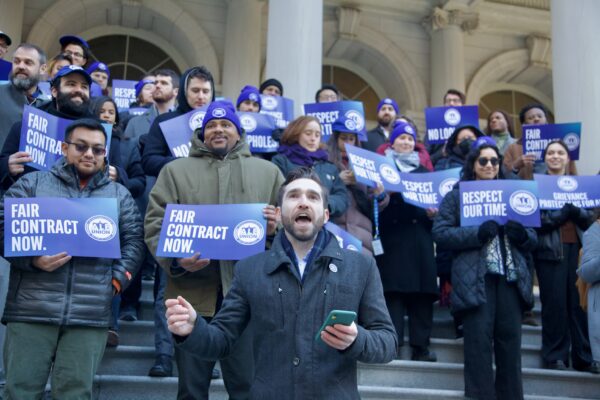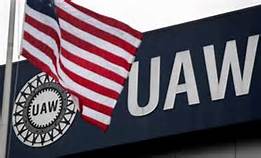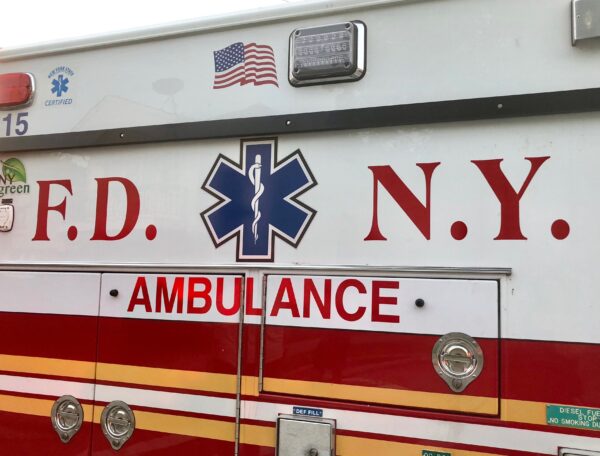November 16, 2012
By Marc Bussanich
More than two weeks after Hurricane Sandy struck, working families in New Dorp, Oakwood, Prince’s Bay, Dongan Hills and Annadale in Staten Island are still without power as cold weather takes hold. Part of Miller Field has been turned into a staging area for recovery efforts where FEMA and Army personnel from Fort Hamilton pass out food and essential goods. NYSNA nurses have been volunteering by going into the different communities to treat people who remain in their homes despite no power and freezing temperatures.
Tricia Caridad is sitting inside an NYSNA-adorned mini motorhome, passing out to nurses
scribbled maps of Olympia Boulevard that runs between Staten Island University Hospital in the north and Midland Beach, one of the areas in Staten Island hardest hit by Sandy. She recently earned her associates in nursing and for the past 10 days has been coordinating and assigning nurses to check up on the elderly and the vulnerable to ensure they’re safe.
“I’ve never seen anything like this. I’ve seen pictures of Katrina and other countries, but the devastation here is unspeakable,” said Caridad.
“I spoke with a group of doctors from Seattle who walked up to the fifth floor of an assisted living facility in Far Rockaway and found 15 people unattended without power and food.”
She noted that early on many volunteers were eager to help, but the storm is almost three weeks old and people have been resuming their day-to-day.
“Unfortunately, as the days go on, people get on with their lives. When we started the effort, 20 nurses were available the week following the storm. But we’re down to six this week."
The nurses have visited a lot of homes east of Olympia Boulevard, an area that’s adjacent to wetlands and where the basements of homes were inundated with almost seven feet of water. They’ve checked residents’ blood pressure, blood sugar, provided medication and made arrangements with EMTs to pick up and transport the very ill to a hospital untouched by the storm.
But as the days go by, the adversely affected residents are only going to need more help.
“We’re going to need more resources and more volunteers, not less. The people we’ve already checked on are going to have new issues because they refuse to leave their homes. It’s getting colder, so we might see increasing cases of pneumonia and bronchitis. I think it’s going to get worse before it gets better,” Caridad said.
Amy Urciuoli also recently earned an associate’s in nursing, but is still looking for a full-time position. In the interim, she’s been volunteering daily. She helped out at a nearby shelter last week where people with mental illness and battling drug addiction are having a particularly hard time because they no longer have easy access to medication.
“There are very vulnerable people wandering in the shelters knowing not what to do. These are people who were already struggling, but the storm has worsened their plight,” said Urciuoli.
“We saw someone walking alone a few days after the storm and he told us he had nowhere to go because his elderly mother, who he depended on for his medications, was transported to a hospital and the house where they lived was deemed uninhabitable.”
The storm also upended Urciuoli’s life. Her daughter has special needs, but the school she attended is temporarily closed down because the building suffered structural damage. She now is being bussed to George L. Egbert School Intermediate School 2 on Midland Avenue.
“It’s not a good learning environment at the school because there are five different classes being simultaneously conducted in the auditorium. My daughter is having difficulty focusing,” Urciuoli said.
Salvatore Barcia said there’s another population of people who are in urgent need for care.
“There’s a large Mexican and Russian immigrant community, but they’re afraid to seek out help for fear of being deported. I never in my life thought that people in Staten Island would be giving birth in their homes and didn’t have a first follow-up with their baby because they deemed their lives in danger,” said Barcia.
Walking among the ruins east of Hyland Avenue, which is 15 blocks from the water’s edge but was overwhelmed by the powerful surge, a woman was standing outside her damaged home. Her husband was a Vietnam War veteran who passed away several years ago. She works part-time at a Stop & Shop, earning about $120 per week. She’s retired and pays her monthly $900 rent with her Social Security. She desperately needs to refill her medication, but she reached her cap on the Medicare drug benefit.
“I can’t get any medications before January. I called Medicare but they offered no help. I can’t pay $200 out of my pocket for medication,” said Irene.
She welled up with tears as Ann McMahon, a RN at Richmond University Medical Center, hugged her.
Ms. Caridad said Irene’s reaction is all too common among the residents NYSNA nurses have encountered in Sandy’s wake.
“The minute you tell them you’re a nurse, they start to cry. It’s as if they’ve been waiting for somebody to ask them, ‘Are you OK?’”



